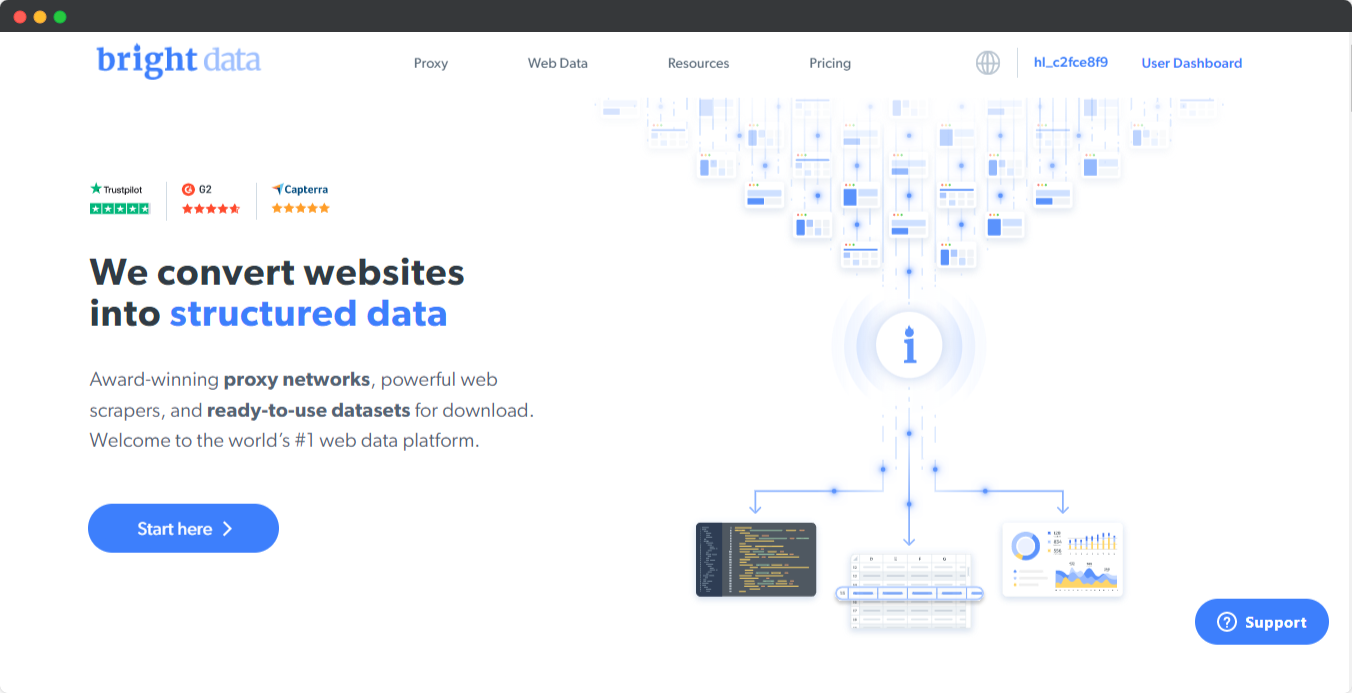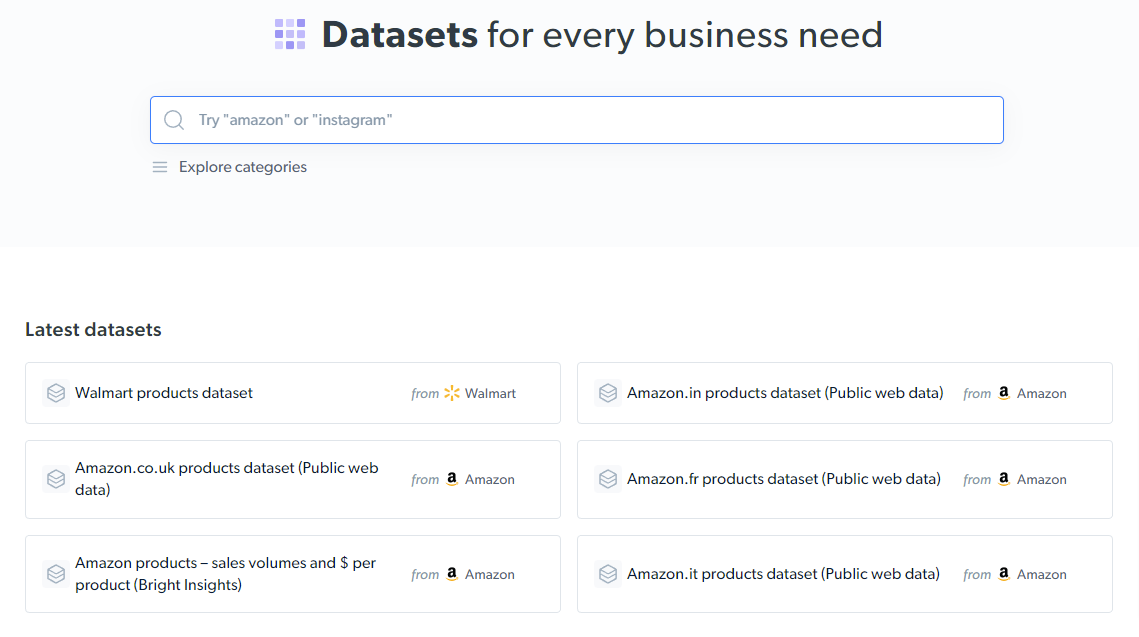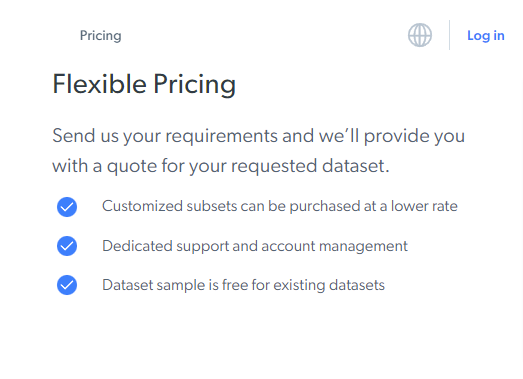
Introduction
Any business is likely to face many adversities in its life cycle. And it's said that having the fortitude to weather the storms as they come holds the key to success. However, this is far easier said than done.
The issue is that today's corporate crises occur suddenly and in a variety of ways; as a result, they can be unpredictable and challenging to plan for. The good news is that you can sort them out if you have the right tools and knowledge in your possession.
In the modern world, the key to overcoming crisis situations is having an air-tight crisis management plan. But producing a plan that's actually air-tight in its efficiency requires a healthy assimilation of data, such as data pertaining to your competitors' strategies, or the history of how other organizations in the same sector have handled similar crises, with what degree of success, and so on. Hence, tools like Bright Data that bring such data to your fingertips should form the bedrock of your crisis management plan.
We'll take a look at how you can leverage such tools to successfully tackle unprecedented events that arise throughout the lifespan of your business. But first, let's get an understanding of what crisis management/resilience planning is: what it entails, what its historical shortcomings have been, and the major obstacles it still faces. Then we will dive into how we can make versatile plans for the safe upkeep of your business by using data.
An Overview of Crisis Management/Resilience Planning and Its Significance
"Business resilience" refers to an organization's capacity to quickly respond and adjust to substantial unforeseen changes that could endanger its operations, personnel, assets, brand, or reputation.
The biggest nightmare for any company should be liquidation, and in order to prevent this from happening, the most significant decisions are best planned ahead of time. The chart readings paint a bleak picture of many countries. In the Q1 (First Quarter) of 2022 in the US, around 13,160 (Thirteen Thousand One Hundred and Sixty) companies have been liquidated already.
Ever since the Covid pandemic, it has been difficult for most businesses to make a significant comeback - at the most, they have tried to survive. Since then, business leaders have realized that it is equally as important to plan for failure as much as success.
Judging by recent events (health crises, climate extremes, etc.), the risk of business disruption is imminent. Hence, the major goal should be to ensure the steadfastness of your business operations at a regular or even better pace. The benefit of having a business resilience or crisis management plan is to develop resistance to critical challenges, absorb them, and thrive amidst the problems.
Historical Blind Spots to Resilience Planning
Historically, business resilience has focused solely on the IT section, concerning itself with cyber attacks and crimes. However, the past few years have shown that there are bigger problems than just tech-related ones. It is possible that a policy can end up affecting your company's performance or a global health crisis can lead to a shortage of manpower.
In other words, your employees or business assets might be affected by anything ranging from a poorly thought-out company policy to catastrophic global events. So, there is a vital need for businesses to expand their understanding and scope of business resilience to include such factors.
Present Obstacles to Resilience Planning for Businesses
Businesses all around the world face numerous obstacles that keep them from planning efficiently in the case of crises and enduring the test of time. A few essential ones are discussed below. But the one crucial thread connecting all of them? The lack of information or data.
1. Cost of acquiring the necessary technology and talent
Most of the time, especially with startups, it is costly to acquire the right technologies and/or talents to efficiently mitigate against risks. Certain technologies are expensive but may not always be the right choice in terms of payoff. But lacking both the necessary information and proper experience, it is easy for a startup or a mid-sized company to flow with the trend of what is and what is not the best choice for their business, eventually finding themselves at the end of the road with no plan or support if the choice turns out to be poorly made.
2. Complex case scenarios (too many possible outcomes)
There is a probability that bad days are ahead and also a probability that better days are ahead, that is why it is a game of chance. With too many possibilities in a complex system - where there are bigger giants playing a part in the same industry - it is hard to tell what might happen next without the necessary information or skills.
3. Lack of quality data pertaining to historical events
Oftentimes, the problem lies in the lack of information that a business intelligence team has access to. Because such information requires frameworks for accessing data, analyzing it, processing it, and presenting it in an insightful way. Data is everywhere, but it is also possible that the data might be logically incorrect, corrupt, outdated, and incomplete, factors that are solely dependent on the source from which the data is acquired. This will most likely lead to very low performance or worst case scenario, total loss or liquidation because of incorrect speculations and estimations.
Accelerate Resilience Planning Using Data to Step Into the Future
As we saw above, the lack of data presents a major hurdle for businesses in coming up with efficient business resilience plans. Successful resilience planning today would involve a business being aware of its competition and the problems that are generally faced in the industry or sector they operate in - and being able to harness this data in planning for a crisis as well as in its day-to-day operational scenario.
Having relevant data on hand for how companies in a similar sector have handled such problems (whether successfully or unsuccessfully) and leveraging that data to make informed decisions would:
- Help come up with an effective and successful business resilience plan.
- Allow for fast adaptability in the event of a crisis, which is also now a key indicator of a business's success.
This is where Bright Data comes into the scene. As a leading web data platform, it grants you access to unlimited data, and advanced statistics to interpret data and inform your decision-making and planning. Getting started is easy, you gain instant access to the collection of numerous tools and technologies available to get the most out of the data sets and customize the results to your needs - it is that simple.
Key Tools Provided By Bright Data
1. Data Collector - Web Scraper
Handling huge amounts of data can be resource-intensive - requiring huge investments in infrastructure, personnel, and maintenance. This can put you in a pinch when you're operating in crisis or pre-crisis scenarios. This is where Bright Data's Data Collector shines; it's a cloud-based tool - meaning that businesses that sign up for this service need not invest in infrastructure and hardware, thereby freeing up crucial time and resources for other critical matters. Moreover, the cloud-based nature of the tool takes out the resource-drain factor involved in scaling data collection and analysis operations.
Another factor that requires a lot of time and effort in data analysis is the cleaning of data. This is one additional, error-prone step that's required in traditional data analysis workflow. Especially in resilience planning or crisis management planning, it's crucial that this phase remains error-free. Here, the Data Collector opens up another way. It lets you skip this step as it hands out clean data sets ready for analysis. Being AI-driven and automated, this process requires very little effort and attention from the user.
Most importantly, this tool is in compliance with all relevant data protection legal requirements, including the new EU data protection regulatory framework, GDPR, and the California Consumer Privacy Act of 2018 (CCPA), meaning your data is obtained in compliance with the law. The last thing you need to worry about is legal troubles when you're trying to plan for uncertainties that threaten your business.
The following image shows the 4 simple steps involved in the typical data collection cycle of the Web Scraper:
The functionality, customization, scalability, and reach of this scraper make it an indispensable addition to your tool kit. The Data Collector is a trustworthy partner you can rely upon while seeking data to bolster your crisis management plans.
2. Data Sets
If you are unfamiliar with web scraping, you can even buy complete ready-made data sets for your needs. Bright Data has a rich collection of data covering several platforms, websites, and data points that are regularly updated. This ensures your data is relevant to your present needs.
For instance, if you're running an eCommerce store on Amazon then it makes sense to keep yourself updated about the latest trends: products that are in high demand, products that are in low demand, the selling price for popular items, etc. Bright Data has a plethora of pre-built data sets that you can make use of to gauge the market trends for products on Amazon.
Ecommerce is not a crisis-averse mode of business. Thus planning ahead for a crisis is important in this case as well. And as we have established before, the availability of relevant data is necessary for an eCommerce venture to survive the uncertainties and anomalies of the modern business world.
In the Amazon ecosystem, the availability of accurate data reduces the need for guesswork while you're filling your inventory, helps you avoid wrong investment decisions, sets you on the right path to reaching your sales targets, and reduces the risk of incurring losses and setbacks. If you're investing in the right products and selling them at optimal rates, you will reach your ideal revenue figures without any hiccups.
As depicted in the image above, the data available on Bright Data's platform is rich and can be obtained in several formats and in several methods.
There's transparency in terms of pricing and flexibility when it comes to customized data sets or subsets of data.
The availability of relevant data - constantly updated to reflect the present scenario within an industry or niche - is imperative for keeping up with the latest trends. Businesses can stay ahead of the curve and avoid pitfalls, thereby averting most crisis scenarios. With the rising uncertainty and the frivolous nature of customers, gauging customer sentiment is paramount for the survival of any eCommerce business on any platform.
According to Warren Buffet, to make your business more secure you need a wider moat around it - and in the modern context, data is the key to widening this proverbial moat.
Actionable Insights
As the old adage goes, "Knowledge is power." And what is knowledge but information? But it's the application of said information that is the actual demonstration of power.
Excelling in the new era of the industry, where data leads and informs, dominates, and even predicts the future, depends on your capacity to obtain this data, analyze it, process it, and display it in a way that intelligently guides your business resilience planning process.
The years of trial and error are gone. There's no need for expensive talents, or expensive technologies either. Additionally, there is access to technical documentation and human help. There is no need for guesswork or inconsistencies anymore; only the right data and the appropriate means of accessing it. Platforms that help you extract this data and present it in an accessible way go a long way in helping your business thrive in the unforeseeable future.





